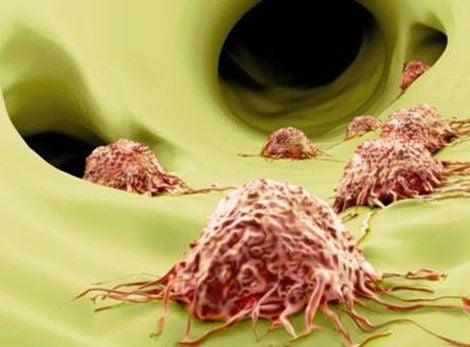This is an automatically translated article.
The article was consulted with Dr. To Kim Sang - Oncology Center - Central Park International General Hospital.When cancer in one organ invades or moves to other organs or regions of the body, then the disease is considered advanced and metastatic. The following article will help us better understand advanced cancer, metastatic cancer and bone metastases.
1. What is advanced stage cancer?
Advanced stage cancer can be locally advanced or locally advanced. They mean the tumor is large, with direct invasion of surrounding structures, or the cancer cells have moved to the lymph nodes around the tumor but have not yet moved to other sites, distant from the tumor-bearing organ. . Diseases at this stage can be curable (eg, breast cancer, colon cancer) or sometimes cannot be cured (eg lung cancer, pancreatic cancer). For cases of incurable disease, the goal of treatment is to shrink the tumor, inhibit tumor growth, relieve uncomfortable symptoms and prolong the patient's survival time. With treatment, the disease can be controlled for a long time and can be considered a “chronic disease”.If you or a loved one is told you have advanced stage cancer, you should find out exactly what the disease means to know the goals of treatment.
Trắc nghiệm: Thử hiểu biết của bạn về bệnh ung thư
Ung thư là nguyên nhân gây tử vong hàng thứ 2 trên thế giới. Thử sức cùng bài trắc nghiệm sau đây sẽ giúp bạn có thêm kiến thức về yếu tố nguy cơ cũng như cách phòng ngừa bệnh ung thư.
Bài dịch từ: webmd.com
2. What is metastatic stage cancer?
Metastatic stage cancer means that cancer cells have broken away from the original tumor site (primary tumor site), moved in the blood vessels to other, distant parts of the body (localization). metastatic mind). They can reach any organ of the body. However, many of these cells will die, only a few can settle in a new area, begin to grow and form new tumors.

Cancer cells grow to invade nearby healthy tissues. They travel through the walls of blood vessels and lymph nodes. They travel within the blood vessels to other parts of the body. They stop at small blood vessels and move through the vessel wall to surrounding tissues and organs. They grow in this organ and gradually form metastases They stimulate the formation of new blood vessels to help them continue to grow When viewed under the microscope, the cancer cells at the site of metastasis are not the same. metastatic organ cells that have characteristics similar to the cancer cells in the primary tumor site. However, due to many processes of survival and growth, metastatic cells may not be exactly the same as those in the primary tumor. This can make them more difficult to treat.
Usually metastatic tumors appear after treatment of the primary tumor or at the beginning of the detection of the primary tumor. There are a few cases where patients come to the doctor because of metastatic tumors without finding the primary tumor location. If this happens, the disease is called metastatic cancer of unknown primary. Common sites of metastasis are lymph nodes, bones, liver, lungs, and peritoneum.
Most metastatic cancers are incurable. Similar to cases of advanced disease that cannot be cured, the goal of treatment is to help shrink the tumor, inhibit tumor growth, relieve uncomfortable symptoms, and prolong survival. for the patient. Treatment depends on the location of the primary tumor, previous treatments used by the patient, and the general health of the patient.
3. What is bone metastasis?

Any bone in the body can be affected by cancer cells. However, bones near the body axis are more likely to metastasize than other bones. The spine is the most common location. Other sites include the pelvis, femur, ribs...
Once cancer has spread to the bone, the disease can rarely be cured. The goal of treatment is similar to other metastatic cases. Even if there are no effective cancer treatments to control the tumor and prolong survival, in order to improve the patient's quality of life, pain management to control bone pain is also invaluable. equally necessary. This is called palliative care. It can be applied at any time during cancer treatment.
4. Why do cancer cells tend to spread to certain parts of the body?
Most cancer cells break out of the primary tumor and travel through the vascular and lymphatic system until they become trapped in the capillaries of the next organ to which the blood flows or the lymph nodes. the first lymph that the lymphatic currents take. This explains why breast cancer often spreads to the lymph nodes in the armpit, but rarely to the lymph nodes in the groin. Gastrointestinal cancers such as colon cancer often metastasize to the liver because the liver is the first organ to receive blood from the veins of the colon. Likewise, many cancers often metastasize to the lungs. This is because the heart pumps blood from the rest of the body to the lungs before the blood is transported to other organs.Please dial HOTLINE for more information or register for an appointment HERE. Download MyVinmec app to make appointments faster and to manage your bookings easily.
Reference source: Cancer.org












